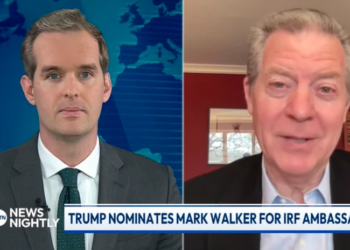
The fight to provide every child with educational choice has a new friend. Last month, Namgyal Choedup, the Dalai Lama’s North American envoy, noted in a letter to Minnesota’s state legislature that “charter schools are currently asked to operate with 30 percent less funding than their public-school counterparts” and implored Governor Tim Walz to suspend plans for further budget cuts. “Our charter school students,” warned Choedup, “cannot bear the weight of these funding cuts.”
The Dalai Lama’s intervention underscores a growing crisis: Minnesota’s charter schools—which serve immigrant families, special-needs students, and children underserved by traditional public schools—are under siege. Beholden to teachers’ unions, Governor Walz is pushing budget cuts that would strip charters of critical funding for facilities and special education, even as the state withholds millions of dollars in federal grant money already awarded to these schools. Add burdensome red tape and new layers of oversight, and the message is clear: the state intends to make it harder for these schools to succeed—regardless of how much parents and students depend on them.
Finally, a reason to check your email.
Sign up for our free newsletter today.
The Dalai Lama’s entry into the charter school fight reflects his long-standing interest in promoting education focused on more than just academics. Like many leaders of distinct, and often vulnerable, communities—Minnesota has the second-largest Tibetan-American population in the country—he sees charter schools as a way to preserve culture and teach values. The Ocean of Wisdom School, a K–4 charter school set to open in the state in 2025, uses a curriculum developed by Emory University and the Dalai Lama that “focuses on the development of the whole child, [including] academic skills as well as social, emotional, and ethical competencies using learning, logic and reason.”
But like the other charter schools in Minnesota, Ocean of Wisdom will face severe financial pressures right off the bat. Charters currently receive only about 70 percent of the funding of other public schools because they only get money from the state, not local taxes.
Making matters worse, Governor Walz is proposing to address the state’s looming budget shortfall by cutting roughly $40 million from charter funding. He wants to eliminate the Long-Term Facilities Maintenance fund, which charters typically use to pay for leases (as most don’t own their buildings). He also aims to scrap the Special Education Charter Tuition Adjustment, which helps charters cover the gap between the actual cost of educating special-needs students and the insufficient reimbursement from local districts. Minnesota charters serve a disproportionately high number of special-needs students—so these cuts would hit them especially hard.
Indeed, much of the public testimony objecting to the charter cuts came from parents of students with specialized education plans. The mother of a student with autism told lawmakers how enrolling at Minnesota Online High School allowed her daughter to escape the bullying she experienced at a large public school and to receive “support and flexibility that instilled a love of learning.” Her story is far from unusual. Many charter students are children whom traditional public schools have already failed. Now, the state is refusing to pay the full cost of educating them in a different setting.
The state is also holding up federal funding for charter schools. According to Rhianon Sargent, federal Charter Schools Program grants manager for the Minnesota Department of Education, the federal government awarded $38.5 million between 2017 and 2023 to be distributed to charters. Yet Minnesota has disbursed only about $15.5 million and is returning $12.5 million to Washington. That’s right—the state is sending money back to the federal government, even as the governor proposes cuts to programs serving Minnesota’s charter students.
Moreover, the state spent the remaining funds from the Charter Schools Program on administrative and technology costs rather than on the schools directly. Sargent says the money “may not have been fully expended because of school closure or delay, reduced enrollment numbers (changing how much schools are spending), loss of funds for failure to adhere to grant guidelines, and other causes (such as not wanting to go through the work of submitting requests).”
Schools are desperate for these funds, but the state is making them jump through hoops to access them. Wendy Swanson Choi, who runs the charter authorizer Novation Education Opportunities (NEO), told me that one school was denied reimbursement from the Charter Schools Program because, when asked for information about the flashcards it was using, the school responded with details about the curriculum and standards the flashcards supported—instead of information about the flashcards themselves.
Not content with cutting and withholding funds, the state is also requiring charter schools to submit significantly more paperwork. Choi told me that she had to file more than 1,000 pages for each school her organization approved this year. Since one of the original goals of charter schools was to free them from government micromanagement, this level of red tape seems counterproductive, to put it mildly. Efforts to pass a moratorium on new charters have so far failed in the legislature, but Choi says that making it harder for authorizers and schools to operate may have the same effect.
The media have been hitting charters hard, too. The Star Tribune reported, “In 2024, nine of the 181 charter schools operating in the state at the beginning of the year closed, the most since the first charter school failure in 1996, state records show.” The report frames this outcome as a problem. But one of the strengths of the charter model is that failing schools must shut down. Some closures were due to low enrollment—in other words, parents didn’t like them enough to send their kids there. That doesn’t happen with traditional public schools, which continue operating regardless of what parents think.
Minnesota’s charter schools rank academically in the middle of the pack nationally. Starving them for resources hasn’t improved outcomes. Nevertheless, they’re better on average than their traditional public school peers when it comes to producing reading gains. Charters also consistently rank among the state’s top schools.
What’s perhaps most galling about the governor’s proposed budget for charters is what it adds: three full-time positions dedicated to “fraud detection and prevention” for charters, which will cost the state more than half a million dollars a year. The budget even adds a position dedicated to legal advice and support for ensuring that the state Department of Education is asserting regulatory authority over charters participating in the state’s nutrition program.
Meantime, Minnesota’s Department of Education hasn’t done well monitoring its own operations. Just last year, the state’s Office of the Legislative Auditor found that the department failed to act on a massive fraud scheme that siphoned off more than $250 million from a pandemic-era federal meal program for children. Seventy people were indicted.
The campaign against charters is hardly surprising, given who’s in the governor’s mansion. Teachers’ unions were among Tim Walz’s biggest contributors during his campaigns for Congress, governor, and as Kamala Harris’s running mate. A former public school teacher, Walz could be counted on to go after any school where teachers aren’t unionized.
Will Minnesota’s politically divided legislature allow the governor to dictate educational options for the state’s most underserved students? In his envoy’s letter, the Dalai Lama expressed his desire to cultivate “wise and compassionate citizens in a world that is ever more complex.” Maybe some will grow up to be wise and compassionate leaders. Minnesota could use a few.
Photo by: Education Images/Universal Images Group via Getty Images
Source link

















